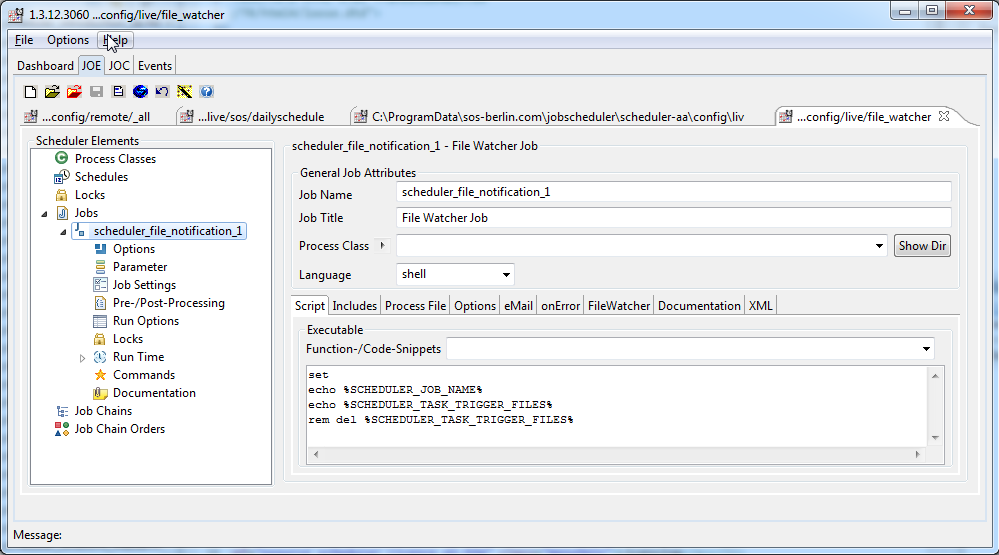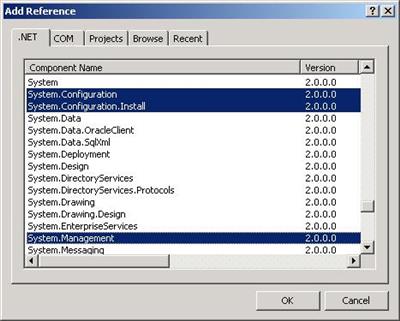

- #FILEWATCHER WITH OBERSAVABLE COLLECTION UPDATE#
- #FILEWATCHER WITH OBERSAVABLE COLLECTION CODE#
- #FILEWATCHER WITH OBERSAVABLE COLLECTION WINDOWS#
Note that a better way to use the FileSystemWatcher class would be by using a Windows Service.

Let's create a new console application project in Visual Studio to demonstrate how a typical file system watcher works. Renamed: This event is triggered when a file or a directory in the path being monitored is renamedĬreating a simple file system watcher in C#.Error: This event is triggered there is an error due to changes made in the path being monitored.Deleted: This event is triggered when a file or a directory in the path being monitored is deleted.Created: This event is triggered when a file or a directory in the path being monitored is created.Changed: This event is triggered when a file or a directory in the path being monitored is changed.The FileSystemWatcher raises the following events when changes occur to a directory that it is monitoring. In order for the FileSystemWatcher to work, you should specify a directory that needs to be monitored. It watches a file or a directory in your system for changes and triggers events when changes occur. Memor圜ache.The FileSystemWatcher class in the System.IO namespace can be used to monitor changes to the file system. String updatedFileContents = reader.ReadToEnd() Using (StreamReader reader = new StreamReader(stream)) Private void OnDataSourceUpdated(Object State)įileInfo file = new (FileStream stream = file.OpenRead()) (changeMonitor) ĬhangeMonitor.NotifyOnChanged(OnDataSourceUpdated) Memor圜("filecontents", localfileContents, policy) Var changeMonitor = new HostFileChangeMonitor(filePaths) Public localfileContents = localfileContents Get ready to see Change Monitors in action.Ĭlass MainWindowChangeMonitorExampleViewModel : INotifyPropert圜hanged When user clicks "Open Child Window", a new instance of ChildWindow is shown in a modeless fashion. This is similar to the view in the previous examples. Private void btnOpenChildWindow_Click(object sender, RoutedEventArgs e) Public partial class MainWindowChangeMonitorExample : Window
#FILEWATCHER WITH OBERSAVABLE COLLECTION CODE#
But first look at the code behind of this view. For that, the view model should use ChangeMonitor. Since FileContents are invalid now, it should be updated to the latest contents.
#FILEWATCHER WITH OBERSAVABLE COLLECTION UPDATE#
When a user clicks the Update button the contents of TextBox should be updated to the DataSource (File). Additionally, it is also expecting the DataContext to have MessageToDataSource property to bind to the Text property of the only TextBox. It is expecting a string property FileContents to bind to the Text property of the TextBlock. The above view is using a new instance of MainWindowChangeMonitorExampleViewModel as its DataContext. It just has an extra TextBox and a Button. The Window below is a similar window as the above example. Let us create a new Window to present an example of a WPF application using ChangeMonitor.

Let's run the application and open child window. Using the value is achieved using the idea of temporal locality of Caching technology. Get We are just copying the contents of the cache entry defined in the MainWindow to the Text property of the TextBlock. The definition of MainWindowViewModel is as follows:Ĭlass MainWindowViewModel : INotifyPropert圜hanged They are bound with Text properties of TextBlocks.

The view is expecting certain properties from MainWindowViewModel which is used as its DataContext.


 0 kommentar(er)
0 kommentar(er)
